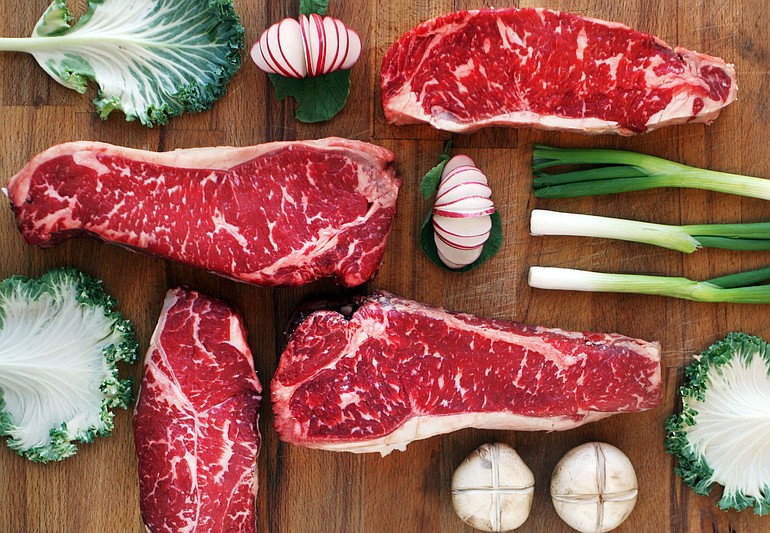o American Kobe — Beef produced in America from hybrids of the Wagyu breed, which is the source of Japan’s Kobe beef. American Kobe producers claim that their beef can have more than 10 times the marbling required for the USDA Prime grade.
o Certified Angus beef — A brand name for beef from Angus cattle; can be choice or prime grade. In addition, the beef meets specifications for marbling, maturity, uniformity, appearance and tenderness.
o Choice — The second-highest grade given by the USDA, below prime. Grades are based on the amount of marbling in the beef.
o Dry-aged — Beef that is hung in a refrigerated cooler at a specific temperature and humidity for at least 10 days before being cut. The aging evaporates moisture from the muscle, concentrating the flavor, and allows the beef’s natural enzymes to tenderize the beef. This method reduces the weight of the beef by about 20 percent.



